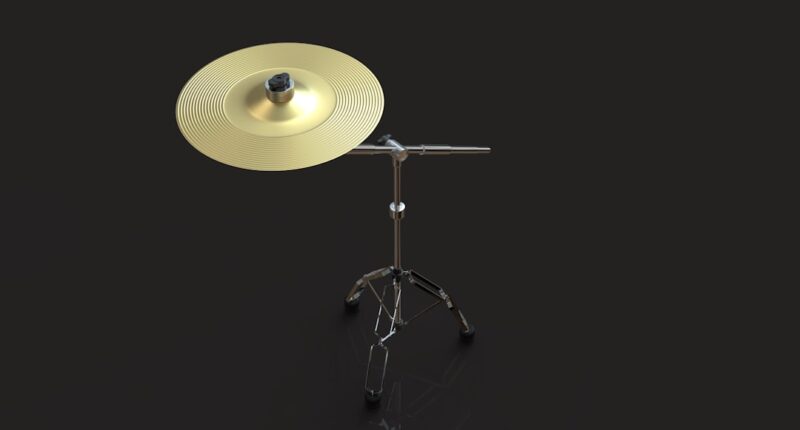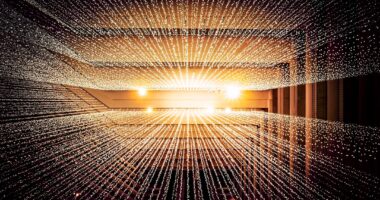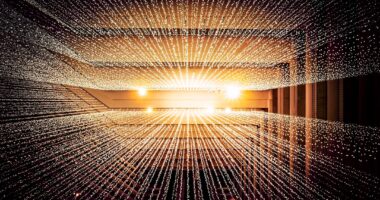Non-fungible tokens, or NFTs, represent a revolutionary shift in how we perceive ownership and value in the digital realm. Unlike cryptocurrencies such as Bitcoin or Ethereum, which are fungible and can be exchanged on a one-to-one basis, NFTs are unique digital assets that cannot be replicated. Each NFT is stored on a blockchain, a decentralized ledger that ensures the authenticity and provenance of the asset.
This technology allows for the creation of verifiable digital ownership, making it possible to buy, sell, and trade digital items like art, music, videos, and even virtual real estate. The mechanics of NFTs hinge on smart contracts, which are self-executing contracts with the terms of the agreement directly written into code. When an NFT is created, or “minted,” a smart contract is deployed on the blockchain, detailing the ownership rights and any royalties that may be applicable upon resale.
This ensures that creators can benefit from their work long after the initial sale. The most common blockchain for NFTs is Ethereum, but other platforms like Binance Smart Chain, Flow, and Tezos are also gaining traction. The unique attributes of NFTs have sparked a surge of interest across various sectors, leading to innovative applications that extend beyond mere collectibles.
Key Takeaways
- NFTs are unique digital assets that represent ownership of a specific item or piece of content using blockchain technology.
- NFTs have the potential to revolutionize the art and entertainment industries by providing new ways for creators to monetize their work and engage with fans.
- Legal and ethical considerations surrounding NFTs include copyright issues, ownership disputes, and the environmental impact of blockchain technology.
- Investing in NFTs can be lucrative, but it also comes with risks such as market volatility and the potential for fraud.
- The environmental impact of NFTs is a complex issue, but there are ongoing efforts to find sustainable solutions and debunk myths about their energy consumption.
Exploring the Potential of NFTs in Art and Entertainment
The art world has been one of the most visible beneficiaries of the NFT boom. Artists can now tokenize their work, allowing them to sell digital art in a way that was previously impossible. This has democratized access to art ownership, enabling collectors to purchase pieces from emerging artists without the barriers typically associated with traditional galleries.
For instance, Beeple’s “Everydays: The First 5000 Days,” which sold for an astonishing $69 million at Christie’s auction house, exemplifies how NFTs can elevate digital art to unprecedented heights.
In addition to visual arts, NFTs are making waves in the entertainment industry.
Musicians are exploring new revenue streams by releasing exclusive tracks or albums as NFTs. For example, Kings of Leon released their album “When You See Yourself” as an NFT, offering fans unique perks such as front-row concert tickets and exclusive audiovisual experiences. This model allows artists to connect directly with their audience while retaining more control over their intellectual property.
Furthermore, filmmakers are beginning to experiment with NFTs to fund projects or distribute content in innovative ways, creating a new paradigm for how films can be financed and consumed.
Navigating the Legal and Ethical Considerations of NFTs

As the NFT market continues to expand, so too do the legal and ethical questions surrounding it. One major concern is copyright infringement. The ease with which digital art can be copied raises issues about who truly owns a piece of work when it is tokenized as an NFT.
While purchasing an NFT grants ownership of the token itself, it does not necessarily confer copyright or intellectual property rights unless explicitly stated in the smart contract. This ambiguity can lead to disputes between creators and buyers, particularly if an artist’s work is minted without their consent. Moreover, the environmental impact of blockchain technology has sparked ethical debates within the NFT community.
The energy consumption associated with minting and trading NFTs on proof-of-work blockchains like Ethereum has raised alarms about carbon footprints and sustainability. Critics argue that the environmental costs outweigh the benefits of digital ownership. In response, many NFT platforms are exploring more sustainable alternatives, such as transitioning to proof-of-stake systems or utilizing layer-2 solutions that significantly reduce energy consumption.
These developments highlight the need for ongoing dialogue about responsible practices in the NFT space.
Investing in NFTs: Opportunities and Risks
| Opportunities | Risks |
|---|---|
| Potential for high returns | Market volatility |
| Ownership of unique digital assets | Lack of regulation |
| New investment opportunities | Security and fraud concerns |
| Creative and artistic expression | Lack of liquidity |
Investing in NFTs presents both exciting opportunities and significant risks. The potential for high returns has attracted a diverse range of investors, from seasoned collectors to newcomers eager to capitalize on the latest trend. Some NFTs have appreciated dramatically in value within short timeframes, leading to stories of individuals making substantial profits from their investments.
For instance, early adopters who purchased CryptoPunks—one of the first NFT projects—have seen their assets skyrocket in value, with some selling for millions of dollars. However, the volatility of the NFT market cannot be overlooked. Prices can fluctuate wildly based on trends, hype, and market sentiment.
Unlike traditional investments that may have established valuation metrics, NFTs often lack clear indicators of worth beyond subjective appreciation. Additionally, the market is rife with scams and fraudulent listings, making due diligence essential for potential investors. Understanding the underlying technology, researching creators and projects, and being aware of market trends are crucial steps for anyone looking to navigate this complex landscape.
The Environmental Impact of NFTs: Debunking Myths and Seeking Solutions
The environmental concerns surrounding NFTs primarily stem from their reliance on energy-intensive blockchain networks. Critics often point to Ethereum’s proof-of-work consensus mechanism as a significant contributor to carbon emissions due to its high energy consumption. However, it is essential to contextualize these claims within broader discussions about energy use in technology and industry.
While it is true that blockchain technology has an environmental footprint, many proponents argue that it also has the potential to drive innovation in renewable energy solutions. In response to these concerns, several initiatives are underway to mitigate the environmental impact of NFTs. The Ethereum network is transitioning to a proof-of-stake model with Ethereum 2.0, which promises to reduce energy consumption by over 99%.
Additionally, various NFT platforms are adopting eco-friendly practices by offsetting carbon emissions or utilizing blockchains that prioritize sustainability. Projects like Tezos and Flow have emerged as greener alternatives for minting NFTs, appealing to environmentally conscious creators and collectors alike.
The Future of NFTs: Trends and Innovations

As we look ahead, several trends are shaping the future of NFTs across various sectors. One notable development is the increasing integration of augmented reality (AR) and virtual reality (VR) technologies with NFTs. This convergence allows for immersive experiences where users can interact with digital assets in real-world environments or virtual spaces.
For example, virtual galleries showcasing NFT art can provide collectors with a unique way to display their acquisitions while engaging with other enthusiasts. Another trend is the rise of utility-based NFTs that offer more than just ownership rights. These tokens may grant access to exclusive content, events, or services within specific ecosystems.
For instance, gaming companies are exploring how NFTs can enhance player experiences by allowing them to own in-game assets that can be traded or sold outside of the game environment. This shift towards utility-driven models could redefine how we perceive value in digital assets and expand the use cases for NFTs beyond mere collectibles.
Building and Nurturing Communities in the NFT Space
Community plays a pivotal role in the success of NFT projects. Many successful NFT collections have cultivated dedicated followings through social media engagement and interactive platforms like Discord or Telegram. These communities foster a sense of belonging among collectors and creators alike, encouraging collaboration and support within the ecosystem.
For instance, projects like Bored Ape Yacht Club have not only created unique digital art but also established vibrant communities where members can participate in exclusive events and share their experiences. Moreover, community-driven initiatives often lead to innovative collaborations between artists and collectors. By involving community members in decision-making processes—such as voting on future project developments or charitable contributions—NFT projects can create a sense of ownership among participants.
This collaborative spirit not only enhances engagement but also strengthens loyalty within the community, ultimately contributing to the long-term sustainability of NFT ecosystems.
Tips for Creating and Selling NFTs: A Beginner’s Guide
For those interested in entering the NFT space as creators or sellers, understanding the process is crucial for success. First and foremost, aspiring artists should familiarize themselves with various NFT marketplaces such as OpenSea, Rarible, or Foundation. Each platform has its unique features and audience demographics; thus, selecting one that aligns with your artistic vision is essential.
After setting up your wallet, you can begin minting your artwork as an NFT by uploading your digital file and filling out relevant details such as title, description, and royalties for future sales. It’s important to promote your work through social media channels and engage with potential buyers to build visibility.
Additionally, understanding your target audience can significantly impact your success as an NFT creator. Engaging with communities on platforms like Twitter or Discord can provide valuable insights into what collectors are looking for and help you tailor your offerings accordingly. By combining creativity with strategic marketing efforts, you can navigate the evolving landscape of NFTs while establishing yourself as a prominent figure within this dynamic space.
If you are interested in learning more about ethereal NFTs, you may want to check out this article on eth-news.com. This website provides valuable insights and updates on the latest trends in the world of Ethereum and NFTs. Additionally, you can also read the article “Hello World” on eth-news.com for a beginner’s guide to understanding the basics of NFTs and how they are revolutionizing the digital art world.
FAQs
What is an ethereal NFT?
An ethereal NFT is a type of non-fungible token (NFT) that represents a unique digital asset with intangible qualities, such as digital art, music, videos, or other digital content. These NFTs are often associated with a sense of ethereal or otherworldly beauty and are typically created and traded on blockchain platforms.
How are ethereal NFTs created?
Ethereal NFTs are created using blockchain technology, which allows for the creation of unique digital assets that cannot be replicated or replaced. Artists and creators can mint their digital content as NFTs, attaching ownership and provenance to the digital asset.
What makes ethereal NFTs valuable?
The value of ethereal NFTs is derived from their uniqueness, scarcity, and the perceived value of the digital content they represent. Collectors and enthusiasts are willing to pay for ownership of these digital assets, often driven by the emotional connection or aesthetic appeal of the content.
How are ethereal NFTs bought and sold?
Ethereal NFTs are bought and sold on various NFT marketplaces and platforms that support the trading of digital assets. These transactions typically occur using cryptocurrency, such as Ethereum, and are recorded on the blockchain to ensure ownership and provenance.
Are there any environmental concerns associated with ethereal NFTs?
The creation and trading of ethereal NFTs have raised concerns about their environmental impact due to the energy consumption of blockchain networks, particularly those using proof-of-work consensus mechanisms. Some artists and collectors are exploring alternative blockchain solutions with lower environmental footprints.





